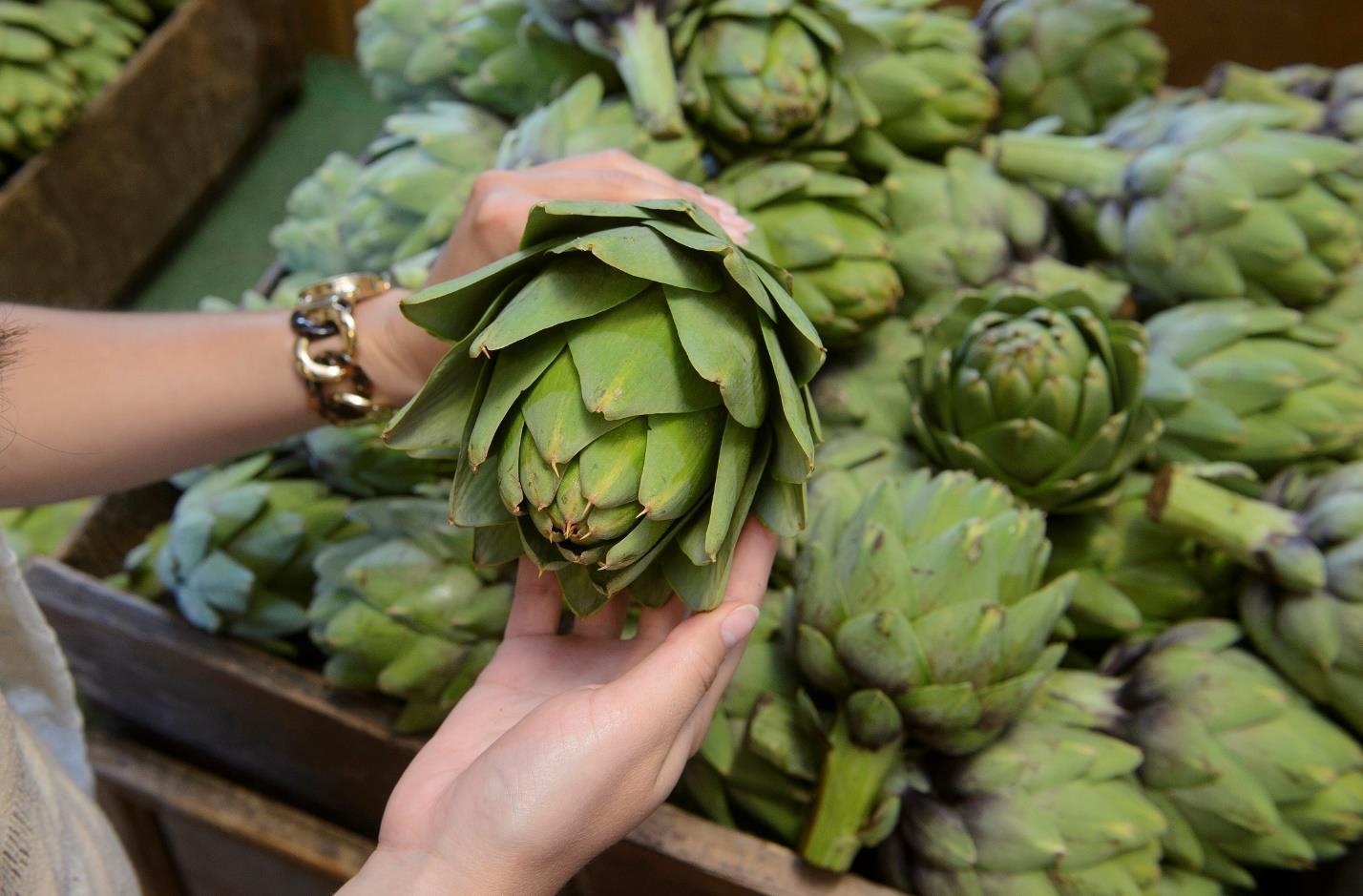A new vegetable is taking over: Artichokes! Harvested year-round in Monterey County, California, artichokes are poised to take over the plates of consumers nationwide. Arguably a vegetable that has long been misunderstood, Monterey County Convention & Visitors Bureau is raising awareness about artichokes and the town of Castroville, California, which has been dubbed the Artichoke Capital of the World.
With a rough exterior and a heart of green gold, artichoke dishes found throughout the destination will introduce people to what this delectable regional delicacy is all about.

The Artichoke Trail features Castroville’s “Artichoke Alley” and includes over 40 stops throughout Monterey County. Visitors can enjoy and experience this unique vegetable at restaurants, farm stands, attractions and more.

OUTER LEAVES
Tough and fibrous; small pith where leaf attaches are edible
HEART
The meaty, succulent center
STEM






Meaty center, stringy outer layer

THORN
Sharp barbs at the tip of each leaf
INNER LEAVES
Softer than outer leaves; edible in young artichoke hearts or quarters
CHOKE
Fine, fuzzy, hair-like filaments
The artichoke is a plant native to the western and central Mediterranean and was domesticated and later introduced to the eastern Mediterranean in ancient times. Initially, it was cultivated for its young leaves rather than the immature flower heads. It wasn't until around 1400 that the edible flower form was first recorded in Italy, and since then it has been extensively cultivated in Mediterranean countries, the Americas and other regions with rich soil and a mild, humid climate.
The history of artichokes in Monterey County, California can be traced back to the late 1800s. It is believed that Italian immigrants introduced artichokes to the area, and they quickly became a popular crop due to the region's ideal growing conditions. Monterey County's cool coastal climate and fertile soil make it a perfect location for growing artichokes.
One of the earliest and most influential growers in the region was Andrew Molera, who started growing artichokes in the late 1800s. He experimented with different varieties and growing techniques, and his efforts helped establish artichoke production as a major industry in Monterey County.


Antioxidant Properties: Artichokes are a good source of antioxidants, which help protect the body against damage caused by free radicals.
Blood Sugar Control: Artichokes contain inulin, a type of soluble fiber that can help regulate blood sugar levels by slowing down the absorption of sugar in the digestive tract.
Improved Digestion: Artichokes are high in fiber, which can help improve digestion by promoting regular bowel movements and reducing constipation.
Liver Health: Artichokes contain compounds that can help protect the liver and improve its function.
Lower Cholesterol: Artichokes contain compounds called cynarin and chlorogenic acid, which have been shown to lower cholesterol levels in the blood.
Reduced Risk of Heart Disease: Artichokes contain several nutrients that have been linked to a reduced risk of heart disease, including potassium, magnesium, and folate. One medium artichoke contains nearly 20% of the recommended daily intake of magnesium.
FUN FACTS
- Marilyn Monroe, then Norma Jean, was crowned the first “Artichoke Queen” at the Castroville Artichoke Festival in 1948.
- Nearly two-thirds of the world’s artichokes are grown in Monterey County, and Castroville is the largest producer of artichokes in the world.
- Monterey County’s Castroville is dubbed the “Artichoke Capital of the World.”

- The artichoke is the official state vegetable of California.






- Artichokes are a member of the thistle family and are the flower buds of the plant.
- Artichokes were considered a luxury food item in Europe during the 16th and 17th centuries and were often served to royalty and nobility.
- The artichoke plant can grow up to six feet tall and three feet wide.
BOIL: In a deep saucepan or pot, stand the prepared artichokes in 3 inches of water. If desired, add oil, lemon juice and seasonings. Cover. Simmer for 25-40 minutes, until a leaf near the center pulls out easily. Invert the artichoke to drain.

STEAM: Place the prepared artichokes on a rack over boiling water or in a steamer. Cover and steam 25-40 minutes, until the leaf near the center pulls out easily.
MICROWAVE: Invert the prepared artichoke in a deep, microwave-safe 1-quart bowl. Add 2 tablespoons of water. If desired add oil, lemon juice and seasoning. Cover with a vented cover. Cook in the microwave on high for 6-8 minutes. Halfway through cooking time, rotate bowl one-half turn. Let stand, covered for 5 minutes. Estimated timing for a 600-700 watt oven, adjust accordingly.
*To cook four artichokes, follow the above directions placing artichokes in a 2 ½ quart bowl. Add 4 tablespoons of water. Cook, covered for 12-14 minutes.
Cooked artichokes may be served hot, cold or room temperature. To eat, pull off the outer leaves one at a time.
Dip the base of the leaf into sauce or melted butter. Pull through teeth to remove the soft, tender base of the leaf. Discard the rest of the leaf. Continue until all leaves have been removed. When you reach the central cone of inner leaves, lift off and discard.

When leaves are done, remove the fuzzy choke, discard. The heart of the artichoke is entirely edible. Enjoy with your favorite sauce.
 Courtesy of Scattini Family Farms
Courtesy of Scattini Family Farms


